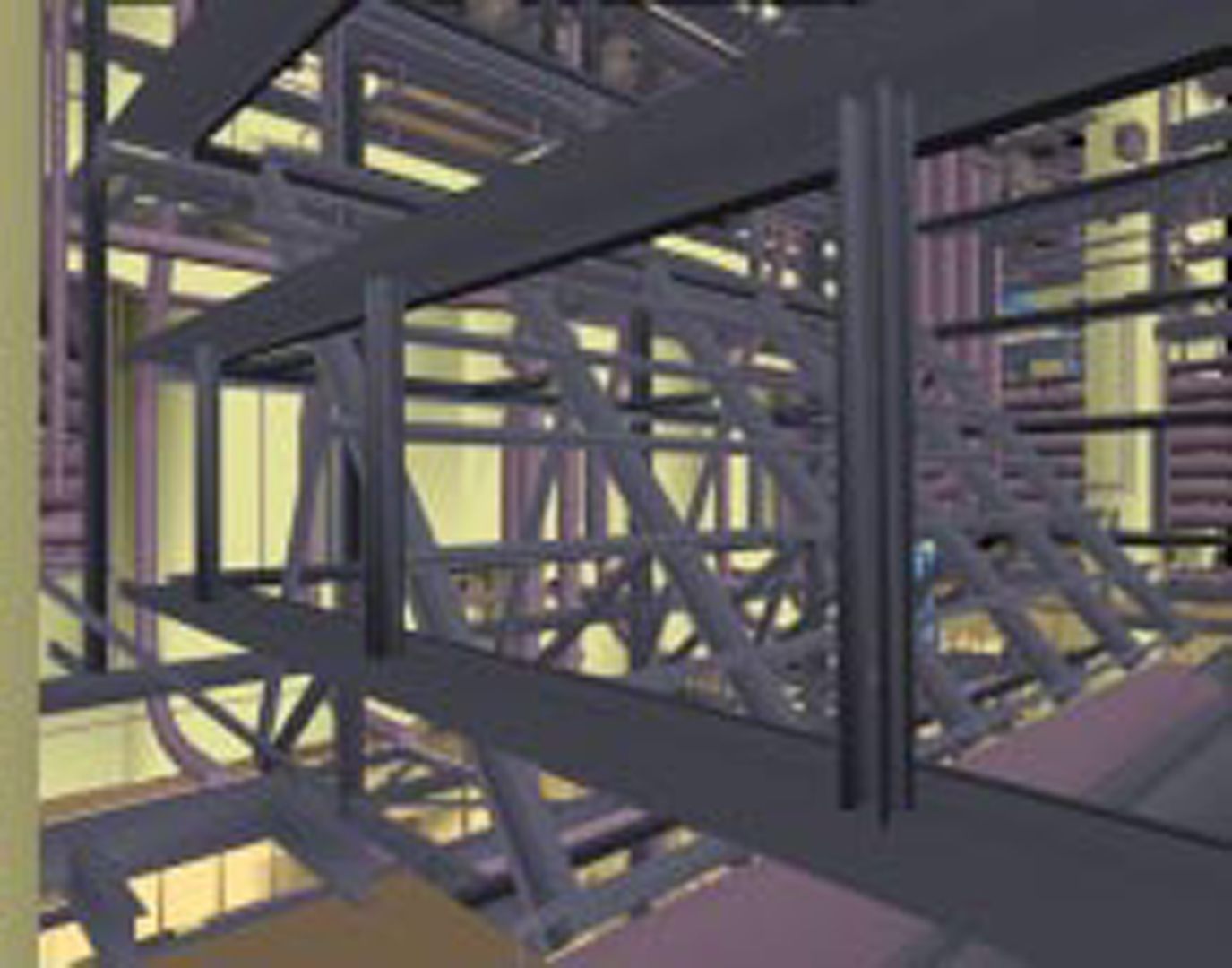“Automatic image placement to provide a guaranteed frame rate” by Aliaga and Lastra
Conference:
Type(s):
Title:
- Automatic image placement to provide a guaranteed frame rate
Presenter(s)/Author(s):
Abstract:
We present a preprocessing algorithm and run-time system for rendering 3D geometric models at a guaranteed frame rate. Our approach trades off space for frame rate by using images to replace distant geometry. The preprocessing algorithm automatically chooses a subset of the model to display as an image so as to render no more than a specified number of geometric primitives. We also summarize an optimized layered-depth-image warper to display images surrounded by geometry at run time. Furthermore, we show the results of applying our method to accelerate the interactive walkthrough of several complex models.
References:
1. Airey J., “Towards Image Realism with Interactive Update Rates in Complex Virtual Building Environments”, Symposium on Interactive 3D Graphics, 41-50 (1990).
2. Aliaga D., “Visualization of Complex Models Using Dynamic Texture-Based Simplification”, IEEE Visualization, 101 – 106 (1996).
3. Aliaga D. and Lastra A., “Architectural Walkthroughs Using Portal Textures”, IEEE Visualization, 355-362 (1997).
4. Aliaga D., “Automatically Reducing and Bounding Geometric Complexity by Using Images”, Ph.D. Dissertation, University of North Carolina at Chapel Hill, Computer Science Dept., October (1998).
5. Aliaga D., Cohen J., Wilson A., Baker E., Zhang H., Erikson C., Hoff K., Hudson T., Stuerzlinger W., Bastos R., Whitton M., Brooks F., Manocha D., “MMR: An Interactive Massive Model Rendering System Using Geometric and Image-based Acceleration”, Symposium on Interactive 3D Graphics, 199-206 (1999).
6. Clark J., “Hierarchical Geometric Models for Visible Surface Algorithms”, CACM, Vol. 19(10), 547-554 (1976).
7. Cohen J., Varshney A., Manocha D., Turk G., Weber H., Agarwal P., Brooks F. and Wright W., “Simplification Envelopes”, Computer Graphics (SIGGRAPH ’96), 119-128 (1996).
8. Coorg S. and Teller S., “Real-Time Occlusion Culling for Models with Large Occluders”, Symposium on Interactive 3D Graphics, 83-90 (1997).
9. Darsa L., Costa Silva B., and Varshney A., “Navigating Static Environments Using Image-Space Simplification and Morphing”, Symposium on Interactive 3D Graphics, 25-34 (1997).
10. DeHaemer M. and Zyda M., “Simplification of Objects Rendered by Polygonal Approximations”, Computer Graphics, Vol. 15(2), 175-184 (1991).
11. Ebbesmeyer P., “Textured Virtual Walls – Achieving Interactive Frame Rates During Walkthroughs of Complex Indoor Environments”, VRAIS ’98, 220-227 (1998).
12. Funkhouser T., Sequin C., “Adaptive Display Algorithm for Interactive Frame Rates During Visualization of Complex Virtual Environments”, Computer Graphics (SIGGRAPH ’93), 247-254 (1993).
13. Garland M., Heckbert P., “Surface Simplification using Quadric Error Bounds”, Computer Graphics (SIGGRAPH ’97), 209-216 (1997).
14. Hoppe H., “View-Dependent Refinement of Progressive Meshes”, Computer Graphics (SIGGRAPH ’97), 189-198 (1997).
15. Luebke D. and Erikson C., “View-Dependent Simplification of Arbitrary Polygonal Environments”, Computer Graphics (SIGGRAPH ’97), 199-208 (1997).
16. Maciel P. and Shirley P., “Visual Navigation of Large Environments Using Textured Clusters”, Symposium on Interactive 3D Graphics, 95-102 (1995).
17. Max N., Ohsaki K., “Rendering Trees from Precomputed Z- Buffer Views”, Rendering Techniques ’95: Proceedings of the 6th Eurographics Workshop on Rendering, 45-54 (1995).
18. McMillan L. and Bishop G., “Plenoptic Modeling: An Image- Based Rendering System”, Computer Graphics (SIGGRAPH ’95), 39-46 (1995).
19. Mueller C., “Architectures of Image Generators for Flight Simulators”, Computer Science Technical Report TR95-015, University of North Carolina at Chapel Hill (1995).
20. Popescu V., Lastra A., Aliaga D., and Oliveira Neto M., “Efficient Warping for Architectural Walkthroughs using Layered Depth Images”, IEEE Visualization, (1998).
21. Rafferty M., Aliaga D. and Lastra A., “3D Image Warping in Architectural Walkthroughs”, IEEE VRAIS, 228-233 (1998).
22. Regan M., Pose R., “Priority Rendering with a Virtual Reality Address Recalculation Pipeline”, Computer Graphics (SIGGRAPH ’94), 155-162 (1994).
23. Bruce Schachter (ed.), Computer Image Generation, John Wiley and Sons, 1983.
24. Schaufler G. and Stuerzlinger W., “Three Dimensional Image Cache for Virtual Reality”, Computer Graphics Forum (Eurographics ’96), Vol. 15(3), 227-235 (1996).
25. Shade J., Lischinski D., Salesin D., DeRose T., Snyder J., “Hierarchical Image Caching for Accelerated Walkthroughs of Complex Environments”, Computer Graphics (SIGGRAPH ’96), 75-82 (1996).
26. Shade J., Gortler S., He L., and Szeliski R., Layered Depth Images, Computer Graphics (SIGGRAPH ’98), 231-242 (1998).
27. Sillion F., Drettakis G. and Bodelet B., “Efficient Impostor Manipulation for Real-Time Visualization of Urban Scenery”, Computer Graphics Forum Vol. 16 No. 3 (Eurographics), 207-218 (1997).
28. Teller S., S6quin C., “Visibility Preprocessing For Interactive Walkthroughs”, Computer Graphics (SIGGRAPH ’91), 61-69 (1991).
29. Turk G., “Re-Tiling Polygonal Surfaces”, Computer Graphics (SIGGRAPH ’92), 55-64, (1992).
30. Zhang H., Manocha D., Hudson T. and Hoff K., “Visibility Culling Using Hierarchical Occlusion Maps”, Computer Graphics (SIGGRAPH ’97), 77-88 (1997).




